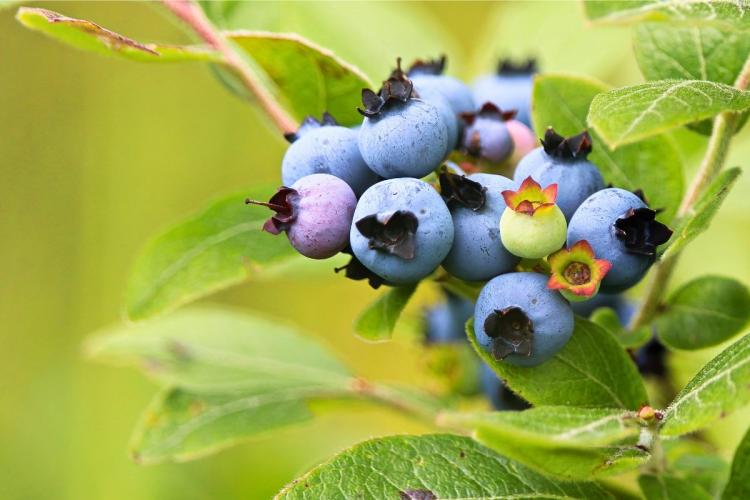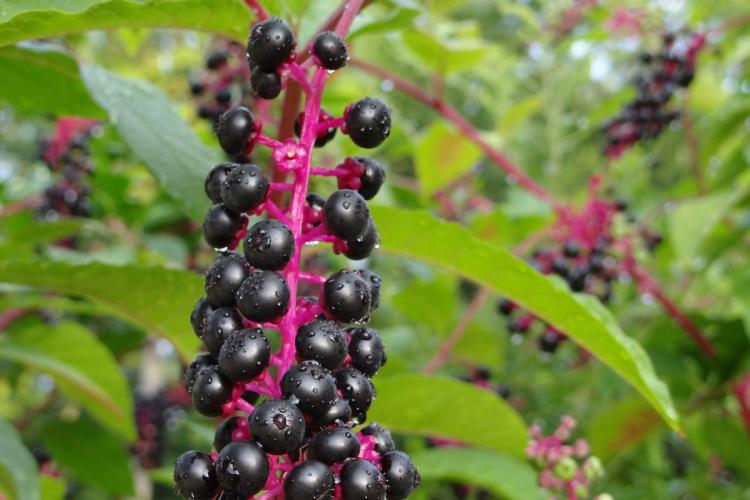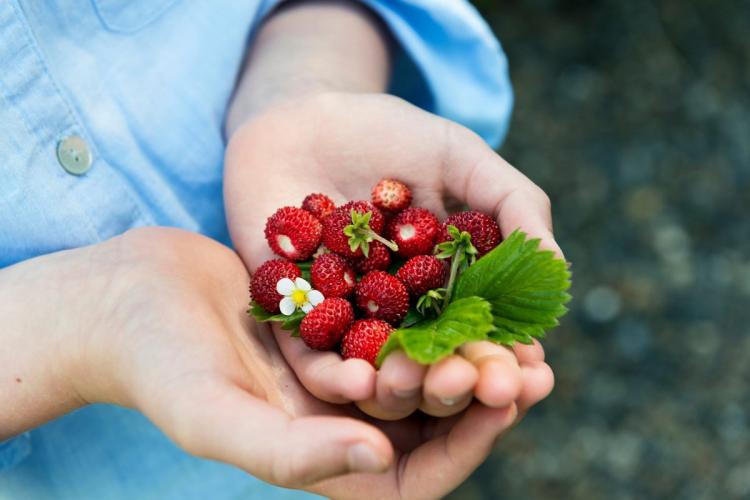How to tell if wild berries are edible
Wild berries are at their best in late spring and summer and foraging for them is a productive activity. guide to edible wild berries.
Imagine an adventure in the great outdoors where you can find delicious, nutrient-packed wild berries that not only taste amazing but also offer a wealth of health benefits! But hold on! It’s crucial to know how to tell if berries are edible, as this will help you identify the edible ones from their poisonous counterparts and ensure a safe and enjoyable foraging experience. In this blog post, we’ll guide you through the fascinating world of wild berries, from identification tips and common edible varieties to foraging etiquette and health benefits. So let’s dive into the berry bushes and get started!
In a few words
- Excitingly explore the beautiful world of wild berries and practice responsible harvesting!
- Delight in delicious and nutritious edible wild berries that can boost your health with powerful antioxidants!
- Stay safe by avoiding poisonous wild berries, always perform an edibility test before consuming them.
Identifying edible wild berries and the key factors to consider
Proper identification of edible wild berries is absolutely essential to avoid toxic or poisonous berries. When foraging, it’s important to consider key factors such as berry color, size, stem, and leaf characteristics to ensure you’re picking the right edible fruit.
Keep in mind that even if a wild berry is dark purple, it doesn’t mean it’s safe to eat. So, caution is key when harvesting wild berries!
Berry color and safety
Berry color can be a helpful indicator of safety, although it’s not foolproof. In most cases, white, yellow, and green colors signify poisonous berries, like ivy berries. Red berries require caution as those growing in tiny clusters are more likely to be poisonous, while solitary berries are more likely to be edible.
Generally, blue, black, and purple berries are safer to eat, but it’s always important to consult reliable sources and field guides for accurate identification.
Stem and leaf characteristics
Examining stem and leaf characteristics can thrillingly help differentiate between edible and poisonous berries, ensuring you find the right edible fruit. You should be excited to examine color, size, stem color, arrangement on the stem, and the number and appearance of leaves growing under the fruit.
However, specific information about the stem and leaf characteristics of edible wild berries might not be readily available, so it’s best to consult with an expert or a reliable resource for more information and be cautious with potentially toxic berries like pokeweed berries.
Essential tips for foraging wild berries
Foraging wild berries requires using field guides, double checking with reliable sources, and being cautious when consuming unknown berries. It is wise to exercise caution when handling wild berries. If you are ever uncertain, it is best not to consume them.
Let’s explore some essential tips to guide your wild berry foraging journey.
Using field guides
Field guides are exciting books that provide valuable information about plants, animals, and other natural phenomena. They can help easily identify edible wild berries and their poisonous lookalikes. The Peterson Field Guide to Edible Wild Plants and The Forager’s Harvest: A Guide to Identifying, Harvesting, and Preparing Edible Wild Plants by Samuel Thayer are both highly recommended field guides for identifying edible wild berries.
When identifying wild plants, take a close look at all parts of the plant and compare them with what you’re seeing in your field guides – exciting stuff!
Double-checking with reliable sources
It’s super important to double-check with reliable sources before consuming any wild berries to ensure accurate identification and avoid consuming toxic berries. Reliable sources for double checking safety when foraging wild berries include government websites, articles on foraging, and books on foraging.
By consulting multiple reliable sources, you can confidently identify and enjoy the delicious and nutritious wild berries that nature has to offer!
Common edible wild berries to look for
Now that we’ve covered identification tips and essential foraging practices, let’s explore some common edible berries you can enjoy. Blackberries, raspberries, elderberries, cloudberries, huckleberries, and gooseberries are just a few examples of edible wild berries that can be eaten raw. These tasty treats are packed with nutrients and offer a delightful mix of flavors, from sweet to tart.
Elderberries, for example, are black, bluish-black, or purple and are typically cooked and sweetened to make juices, jams, chutneys, or elderberry wine. Ripe huckleberries are a delicious summer treat. They are sweet, with a hint of tartness, unlike yellow berries and holly berries, which should not be consumed.
So next time you’re in the great outdoors, keep an eye out for these delicious wild berries, including virginia creeper berries, and enjoy their natural flavors.
Poisonous wild berries to avoid
While there are many delicious edible wild berries, it’s equally important to be aware of the poisonous ones to avoid, such as the notorious poisonous berry. Pokeberries, water hemlock, and certain types of nightshade are some of the poisonous wild berries you should steer clear of. These toxic berries can cause pain, nausea, vomiting, diarrhea, and more serious gastrointestinal problems like bloody diarrhea and low blood pressure.
To ensure your safety, always perform an edibility test before consuming wild berries. And if you’re uncertain about the safety of a wild berry, it’s best to play it safe and not eat it. Remember, proper identification is key to enjoying wild berries without any unpleasant surprises!
Poisonous orange berry bush identification
Identifying poisonous orange berry bushes is crucial for outdoor enthusiasts, foragers, and anyone who spends time in natural settings. Consuming poisonous berries can lead to severe illness or even death, so it's essential to know what you're dealing with. Here are some characteristics to look for when identifying poisonous orange berry bushes:
Common types of poisonous orange berry bushes
Bittersweet nightshade (solanum dulcamara)
Leaves: Alternate, oval-shaped, and may have lobes at the base.
Flowers: Purple with yellow centers.
Berries: Bright orange when ripe.
Habitat: Found in moist areas, along fences, and in woodlands.
Oriental bittersweet (celastrus orbiculatus)
Leaves: Alternate, oval, and finely toothed.
Flowers: Small, greenish-yellow.
Berries: Orange-yellow capsules that split open to reveal red berries.
Habitat: Forest edges, roadsides, and disturbed areas.
Jerusalem cherry (solanum pseudocapsicum)
Leaves: Simple, lanceolate, and alternate.
Flowers: White or purple.
Berries: Bright orange when ripe.
Habitat: Often found as an ornamental plant; not typically wild.
Identification features
- Leaf Arrangement: Check if the leaves are alternate, opposite, or whorled.
- Leaf Shape: Observe the shape of the leaves—whether they are oval, lanceolate, or have any distinctive features like lobes or serrations.
- Flowers: The color and shape of the flowers can be a significant clue. For example, Bittersweet Nightshade has purple flowers with yellow centers.
- Berries: The color, size, and shape of the berries are crucial. Note if they are clustered or solitary.
- Stem and Branches: Some poisonous bushes may have thorns or distinctive bark.
- Habitat: Where the bush is growing can also be a clue. Some species prefer moist areas, while others are found along roadsides or in disturbed areas.
Precautions and best practices for eating wild berries
When it comes to eating wild berries, it’s important to take some precautions.
- Never consume berries if you are not 100% sure of their identity.
- Wear gloves when handling unknown plants to avoid skin irritation.
- Consult field guides and experts for accurate identification.
- Be cautious even if animals are seen eating the berries; what's safe for them may not be safe for humans.
- If someone ingests a poisonous berry, seek medical attention immediately.
By being aware of these features and precautions, you can safely enjoy your time outdoors without the risk of poisoning from misidentified plants.
Even if the berries are known to be edible, they might cause problems if they are not consumed regularly. Start by consuming small amounts of the berries and wait for digestion to ensure that you don’t experience any adverse reactions.
If you’re not completely familiar with the berry, consider performing an edibility test before consuming it. And, of course, give organic berries a good rinse before chowing down to get rid of any dirt or grime.
What to do if you've ingested a toxic berry
Accidents can happen, and if you suspect you’ve ingested a toxic berry, it’s important to act quickly. Contact a medical professional immediately or call poison control for guidance.
Symptoms of ingesting a toxic berry can include pain, nausea, vomiting, and diarrhea, as well as more serious gastrointestinal problems like bloody diarrhea and low blood pressure. By knowing what to do in this situation, you can minimize the potential harm and ensure your safety.
Foraging etiquette and responsible harvesting
Foraging wild berries can be a fun and rewarding experience, but it’s essential to practice responsible harvesting and foraging etiquette. This includes being conservative in your harvest, only picking what you need, and leaving enough for the remaining population to easily recover – a good rule of thumb is the “rule of thirds”.
Additionally, respect private property by seeking permission to enter the land and ensure you leave no trace of your visit by picking gently, not picking the roots, and only picking from clean areas. By following these responsible harvesting practices, you help protect the natural environment and ensure that wild berries can continue to be enjoyed by future generations and the wildlife that depend on them.
Health benefits of consuming edible wild berries
Edible wild berries have many health benefits. Not only are they delicious, but they are also jam-packed with nutrients and powerful antioxidants. These antioxidants can help boost your immunity, protect your brain and heart, as well as reduce cellular damage. For example, elderberries are an incredible source of vitamin C and vitamin B6, both of which support immune health.
Muscadines are high in riboflavin (vitamin B2) and dietary fiber, while their skin contains the antioxidant resveratrol. Buffaloberries contain lycopene, which has been associated with a lower risk of heart disease, certain eye conditions, and cancer. This beneficial effect is linked to the presence of this powerful antioxidant.
By incorporating a variety of wild berries, including yew berries, into your diet, you can enjoy their unique flavors while reaping their amazing health benefits. To eat wild berries, simply add them to your favorite recipes or enjoy them as a delicious and nutritious snack.
Berry careful
The world of wild berries offers a treasure trove of delicious flavors and health benefits. By learning how to identify edible wild berries, following essential foraging tips, and practicing responsible harvesting, you can safely enjoy nature’s bounty. So, go ahead and explore the fascinating world of wild berries, and remember – proper identification is key to a safe and enjoyable foraging experience!
Questions about wile berries
Are there poisonous wild blueberries?
Blueberries are not poisonous, but there are some poisonous berries that look very similar to blueberries, such as the holly berry and the nightshade berry.
How can you tell if a berry is poisonous?
By taking note of the color and texture of the berry, you can usually tell if a berry is poisonous or not. Avoid yellow and white berries, as these are almost always toxic.
Check to see if the red berries are edible by performing an edibility test before consuming them. Beware of blue, black, or purple berries as these may be deceptively similar to the nightshade berry, which is toxic.
How do you know which berries are safe to eat?
Be sure to take the time to determine whether a berry is safe before eating it! Check its color - dark berries like blue and black are usually safe, while red and orange ones are more likely to be harmful.
Keep in mind that you should always perform an edibility test just to make sure!
What common berries are poisonous and should not be eaten?
Be careful and stay away from eating any of the 8 poisonous wild berries found in the United States! Eating these can be potentially deadly, so take extra caution to keep yourself and your loved ones safe.
What precautions should I take when eating wild berries?
You should always be cautious when eating wild berries: be sure to research what is edible in your area, inspect the berries before you eat them, and only eat small portions of any berry that is unfamiliar.
It is important to be aware of the potential risks associated with eating wild berries. Eating the wrong type of berry can cause serious health problems, so it is important to be sure of what you are eating. Researching what is edible in your area is the best way to ensure that you are safe.
What should I do if I've ingested a toxic berry?
Act quickly! Seek medical attention or contact poison control right away if you’ve ingested a toxic berry. Don’t wait - time is of the essence in this situation!






